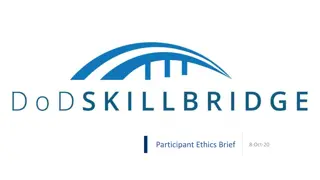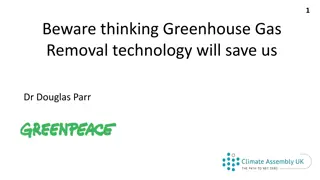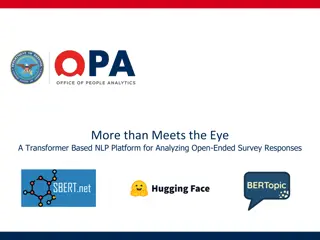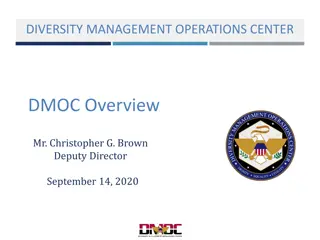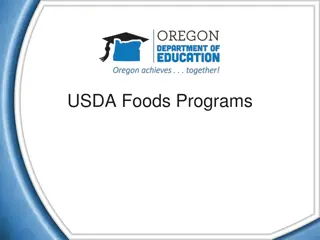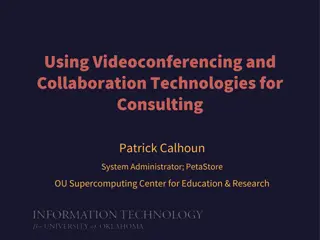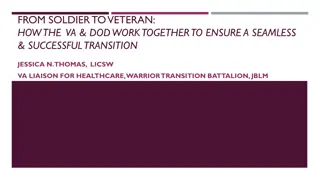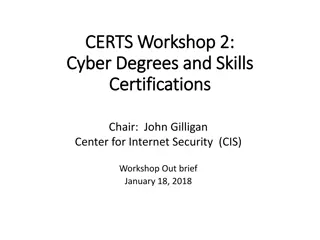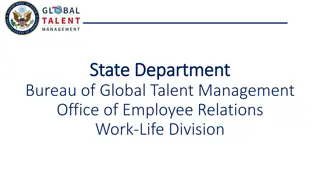TechLink and DOD Technologies Showcase on June 21, 2023
Explore the Lab to Business Showcase featuring cutting-edge technologies by TechLink and DOD, such as autonomous agent scheduling, additive manufacturing, and composite part manufacturing. Learn about working with federal labs, licensing patents, and accessing expertise for collaborative research opportunities. Discover TechLink's services for technology transfer partnerships with the Department of Defense and Veterans Affairs, providing guidance and access to a vast database of available technologies. Join the showcase to engage with innovative solutions and industry experts.
Download Presentation

Please find below an Image/Link to download the presentation.
The content on the website is provided AS IS for your information and personal use only. It may not be sold, licensed, or shared on other websites without obtaining consent from the author.If you encounter any issues during the download, it is possible that the publisher has removed the file from their server.
You are allowed to download the files provided on this website for personal or commercial use, subject to the condition that they are used lawfully. All files are the property of their respective owners.
The content on the website is provided AS IS for your information and personal use only. It may not be sold, licensed, or shared on other websites without obtaining consent from the author.
E N D
Presentation Transcript
Lab to Business Showcase with TechLink and DOD Technologies June 21, 2023 UASCluster.com
Craig Mahaney, Executive Director Welcome! Welcome! 2
Lab to Business Showcase Agenda for June 21, 2023 1. TechLink Services 2. Autonomous Agent scheduling 3. Agent Conflict Resolution 4. Counter swarm interception using sacrificial UAVs 5. Real-time adaptive additive manufacturing system 6. Improved Slicer algorithms for 3D printing 7. Manufacturing hollow spheres with high-strength and stiffness 8. Manufacturing improved composite part 3
Working with Federal Labs Licensing patents Software release & utilization Collaborative research Sponsored research Understanding research opportunities Access to expertise 4
TechLink Services Nationally focused technology transfer partnership intermediary for the U.S. Department of Defense and Department of Veterans Affairs Provide services at no cost to your business Guidance to navigate DOD labs Technology Transfer opportunities Certified licensing professionals Website includes extensive database of DOD and VA available technologies Contact Derek Mayer Derek.Mayer@TechLinkcenter.org Or visit: https://techlinkcenter.org/ 5
Autonomous Agent Scheduling Autonomous Agent Scheduling System to manage a network of autonomous agents to accomplish goals and tasks, efficiently and securely. Agents include include autonomous vehicles including driverless vehicles or UAVs. Technology can be generalized for any number of agents. Developed by Naval Surface Warfare Center - Panama City Division Contact at TechLink: Derek Mayer Email: Derek.Mayer@TechLinkcenter.org 6
Autonomous Agent Scheduling Autonomous Agent Scheduling Background and challenge Autonomous agents are AI based goal directed computational systems that are capable of independent decision-making based on external environment or vehicle capabilities to achieve the predefined goals. Using networks of autonomous agents to accomplish enterprise goals can address problems such as Efficiency and Optimization Scalability Real-time Response and Availability Cost Reduction HOWEVER Utilization of large groups of autonomous agents can present new challenges in terms of system complexity, reliability, and the potential for unintended consequences. 7
Autonomous Agent Scheduling Autonomous Agent Scheduling System to manage a network of autonomous agents to accomplish goals and tasks, efficiently and securely. Agents include include autonomous vehicles including driverless vehicles or UAVs. Scheduling-centric approach Technology can be generalized for any number of agents. Considers constraints such as docking and deployment actions, fuel availability, costs, and capacity, goals and capabilities of agents, transit and transport actions, and servicing actions. Agents execute various types of tasks, such as customer support, imagery, surveillance, data analysis, scheduling, and can operate over different industries 8
Autonomous Agent Scheduling Autonomous Agent Scheduling This technology manages and optimizes task planning for a group of service and transport agents. Service agents: a system that is designed to perform specific tasks or provide services, often in a customer-centric environment. Transport agents: an autonomous vehicle that can navigate and transport materials, goods or passengers without human intervention The ultimate goal is to ensure that transport agents perform the necessary transport and refueling operations while service agents carry out their tasks with ease. The system uses MILP (Mixed Integer Linear Programming) techniques to determine a task plan that minimizes time and effort to completion. The plan is then communicated to the agents for execution. 9
Autonomous Agent Scheduling Autonomous Agent Scheduling IP, Licensing and Collaboration US Patent 10,496,095 Expires on February 22, 2038 Businesses may commercialize via a patent license agreement, fees negotiable Navy researchers have interest in collaborating with licensees TechLink guides businesses through evaluation and licensing; services provided at no cost 10
Agent Conflict Resolution Agent Conflict Resolution System to resolve duplicate task conflicts among autonomous agents while working to preserve overall makespace objective. This is for situations where communication is limited. A dynamic scheduling framework, referred to as the Generous Agent Algorithm (GAA), deconflicts service tasks as agents from distinct teams come into conflict and discover one another. Developed by Naval Surface Warfare Center - Panama City Division Contact at TechLink: Derek Mayer Email: Derek.Mayer@TechLinkcenter.org 11
Agent Conflict Resolution Agent Conflict Resolution Autonomous agents are becoming more utilized in a variety of situations. Independent teams or groups of agents with identical tasks may encounter each other under limited communications , leading to a need for "social ability" within multi-agent systems. This ability refers to the capacity for agents to share information and negotiate with others, ultimately improving cooperation and efficiency in completing tasks. Human-like decision behaviors have been shown to improve task completion times, but simplistic assumptions lack the complexity of human negotiations. 12
Agent Conflict Resolution Agent Conflict Resolution Designed improve collaboration among diverse teams of independent agents in situations where communication is limited. It does this by providing a scheduling system that resolves conflicts and promotes teamwork. The system is called the Generous Agent Algorithm (GAA) and it enables agents to remove costly tasks from their schedules and replace them with other agents' tasks. The GAA ensures that these changes do not negatively impact the team's overall work time. Conflicts are discovered as each agent broadcasts and receives task and schedule data to other agents in its local vicinity. Working from common data, each agent's local processor can use the GAA to coordinate its schedule with the other agents to deconflict the task, while not increasing its own team's makespan. 13
Agent Conflict Resolution Agent Conflict Resolution IP, Licensing and Collaboration US Patent 11,269,683 Expires on August 5, 2040 Businesses may commercialize via a patent license agreement, fees negotiable Navy researchers have interest in collaborating with licensees TechLink guides businesses through evaluation and licensing; services provided at no cost NOTE: expertise at Naval Surface Warfare Center - Panama City Division 14
Counter Counter- -swarm interception using sacrificial UAVs swarm interception using sacrificial UAVs A counter swarm system that utilizes a group of UAVs designed to neutralize that attacking swarm, whether from sea, ground or air Developed by Naval Surface Warfare Center Weapons Division Contact at TechLink: Derek Mayer Email: Derek.Mayer@TechLinkcenter.org 15
Counter Counter- -swarm interception using sacrificial UAVs swarm interception using sacrificial UAVs One of the most severe asymmetric threat tactics that will need to be countered is described as the swarm tactic. This involves many small boats utilizing their high speed and maneuverability in attacking a warship to overwhelm, by sheer numbers, any self-defense capability the ship might have. Swarm tactics may also be found in land-based situations. Therefore, an airborne system is necessary to engage multiple combatants simultaneously. 16
Counter Counter- -swarm interception using sacrificial UAVs swarm interception using sacrificial UAVs System consists of multiple target seeking and destruction devices, each with target detection, tracking, guidance, positioning, and wireless communication capabilities, and the ability to destroy targets. One of the devices is designated as an oracle (group leader) The devices are launched from a deployment platform and share data related to target acquisition and other devices. Based on the probability of intercept, the devices are assigned to each target. The devices use a potential function to maintain inter-device spacing and track each target, updating the trajectory according to the maneuvering and inter- device spacing. Once the target is intercepted and destroyed, the oracle relays the data and outcome to a control base. 17
Counter Counter- -swarm interception using sacrificial UAVs swarm interception using sacrificial UAVs IP, Licensing and Collaboration 3 US Patents: 7675012 expires. 11/242025 7422175 expires01/23/2025 7947936 expires11/15/2026 Technologies available through express license.. Rapid license process Non-exclusive licenses starting at $2,000 upfront and 2% royalty. Can negotiate exclusive agreement Navy researchers do have interest in collaborating with licensees Also potential business opportunity with DOD or DHS TechLink guides businesses through evaluation and licensing; services provided at no cost 18
Real Real- -time quality management additive manufacturing time quality management additive manufacturing An additive manufacturing system and method that includes real-time process monitoring and measurement for quality control of additive manufacturing (AM) operations. Developed by Naval Surface Warfare Center Corona Division Contact at TechLink: Derek Mayer Email: Derek.Mayer@TechLinkcenter.org 19
Real Real- -time quality management additive time quality management additive manufacturing manufacturing Additive Manufacturing (AM) parts can exhibit surface roughness and poor dimensional accuracy coupled with internal structural and micro- structural defects. Defects are identified through post manufacturing high-end non- destructive testing and metrology methods, such as coordinate measuring machines and X-ray computer tomography. Post-processing machining techniques such as grinding, polishing, sandblasting, and milling are required to achieve the desired surface finish and dimensional accuracy necessary to certify parts. These processes are time-consuming, costly, and require material handling. 20
Real Real- -time quality management additive time quality management additive manufacturing manufacturing A multi-process additive manufacturing system that incorporates monitoring, measuring, and controlling processes. Includes elements for detecting, identifying, and addressing defects to remove related material or address under print or missing material. The system uses two lasers: The first laser to melt and consolidate powder and a second laser for metrology. The second laser helps measure surface roughness, dimensional accuracy, and material properties. Based on these measurements, corrective actions can be taken to achieve the desired accuracy and surface finish. 21
Real Real- -time quality management additive manufacturing time quality management additive manufacturing IP, Licensing and Collaboration US Patents: 11,203,160 Expires 03/29/2039 Businesses may commercialize via a patent license agreement, fees negotiable Navy researchers have interest in collaborating with licensees TechLink guides businesses through evaluation and licensing; services provided at no cost 22
Improved Slicer Program for 3 D printing A slicer based on implicit methods. This enables an infinite number of designer-defined in-fills thereby yielding parts with specified and closely controlled structural integrity. Developed by Naval Research Lab Contact at TechLink: Derek Mayer Email: Derek.Mayer@TechLinkcenter.org 23
Improved Slicer Program for 3 D printing 3D printing machines slicer programs to convert an input into commands that drive the motions and actions of the printing head. Common slicer algorithms apply predetermined geometric transformations to each slice and can fail to take into account the overall geometry of the part being produced. This explicit evaluation method can lead to structural problems such as thin walls and gaps that degrade the overall integrity of the part. The input geometry is usually approximated by triangular facets to simplify the computation of the two-dimensional slices. Each slice has perimeters or "shells" and a space-filling "infill" pattern. The calculation of perimeters and infill becomes more complicated when the geometry is non-convex. 24
Improved Slicer Program for 3 D printing This technology utilizes implicit approach to address the loss of non-geometric information in the digital thread to better convey the intent of designers throughout the additive manufacturing toolchain. This method can be applied to generalized and very complex components, such as those that are increasingly produced using additive manufacturing . Able to generate support structure Infill toolpath may be generated based to capture the physics relevant to the original design intent such as the stress behavior of the system under tension. Enables an infinite number of in-fills thereby yielding parts with specified and closely controlled structural integrity. 25
Improved Slicer Program for 3 D printing IP, Licensing and Collaboration US Patents: 11,119,466 Expires 10/28/38 Businesses may commercialize via a patent license agreement, fees negotiable Navy researchers have interest in collaborating with licensees TechLink guides businesses through evaluation and licensing; services provided at no cost 26
Manufacturing hollow spheres with high-strength and stiffness A suite of material technologies with manufacturing methods to generate foams made from amorphous hollow spheres. The spheres combine to make cellular structures of high strength and stiffness. These structures are built from millions of microscopic glass (or metallic-glass) bubbles about the diameter of a human hair into new super-strong, super-light, shock- absorbing, and buoyant constructs. Developed by Naval Surface Warfare Center Corona Division Contact at TechLink: Derek Mayer Email: Derek.Mayer@TechLinkcenter.org 27
Manufacturing hollow spheres with high-strength and stiffness The opportunity is a suite of technologies using foams made from amorphous hollow spheres. The spheres combine to make cellular structures of high strength and stiffness. These structures are built from millions of microscopic glass (or metallic-glass) bubbles about the diameter of a human hair into new super-strong, super-light, shock-absorbing, and buoyant constructs. Test results show that the cellular material made from these spheres dissipated more mechanical energy for a given volume than any other cellular material on the planet (14.8 megajoules per cubic meter). Opportunity includes 5 issued patents and 1 pending patent 28
Manufacturing hollow spheres foams with high-strength and stiffness Foams from amorphous hollow spheres cellular structure can provide innovative solutions, including: Lightweight and strong structural components: Hollow spheres foams offer a combination of low density and structural integrity, including load-bearing applications. Potential solutions include Aerospace, automotive, and construction. Impact and crash protection Hollow spheres foams can absorb and dissipate impact energy effectively. They can be utilized in safety equipment including helmets, body armor, and vehicle crash pads. Thermal insulation in extreme environments: Hollow spheres foams can offer superior insulating properties due to air-filled voids within the cellular structure. Potential solutions in aerospace, energy, and industrial applications. Vibration and noise control: Excessive vibrations and noise can be problematic including automotive, transportation, and construction. Packaging and shipping protection: Hollow spheres foams can act as cushioning and shock-absorbing materials due to their ability to compress and absorb impact forces. Buoyancy and flotation: Hollow spheres foams are buoyant due to their hollow structure filled with air. They can be used in the design of flotation devices, buoys, and floating platform. 29
Manufacturing hollow spheres with high-strength and stiffness IP, Licensing and Collaboration US Patents: 9,102,087 expires 07/17/2032 10,005,690 expires 12/14/2032 10,011,513 expires 05/05/2036 10,059,617 expires 04/04/2033 11,084,750 expires 08/20/2038 Pending 17/360,426 filed 06/28/2021 Navy researcher is very active and have interest in collaborating with licensees Businesses may commercialize via a patent license agreement, fees negotiable TechLink guides businesses through evaluation and licensing; services provided at no cost 30
Manufacturing improved composite part Manufacturing improved composite part System to manufacture a toughened, self-healing composite parts. These composites show beneficial properties without introducing additional weight. Developed by U.S. Army DEVCOM Aviation & Missile Center Contact at TechLink: Derek Mayer Email: Derek.Mayer@TechLinkcenter.org 31
Manufacturing improved composite part Manufacturing improved composite part Composite materials face two significant challenges. Firstly, it is difficult to detect damage to these materials during manufacturing or while they are still in use. Secondly, repairing these damaged parts can also be a challenge. To address these challenges, there is a need for stronger materials that are more resistant to interlaminar shear forces and stiffness. These materials should not weigh significantly more than the ones they replace. 32
Manufacturing improved composite part Manufacturing improved composite part Method for creating a strong and preferably self-repairing composite material. The composite material consists of two layers of fiber-reinforced polymer with an intervening layer made up of numerous islands of thermoplastic polymer. The primary advantage of this technique is that it produces composites with desirable properties without adding significant weight (more than 1%) through the use of additives applied between composite layers, such as through printing. Patent describes a wide variety of materials and application methods for thermoplastic islands. Also for carbon reinforced layers. 33
Manufacturing improved composite part Manufacturing improved composite part IP, Licensing and Collaboration US Patents: 11,491,771 Expires 10/18/2035 NOTE: Patent contains much information on variation of materials and data on performance Businesses may commercialize via a patent license agreement, fees negotiable Navy researchers do have interest in collaborating with licensees TechLink guides businesses through evaluation and licensing; services provided at no cost 34
TechLink Contact info Contact Derek Mayer Derek.Mayer@TechLinkcenter.org visit: https://techlinkcenter.org/ 35
Thank you Look for survey, tell us what you think 36



















